 
|
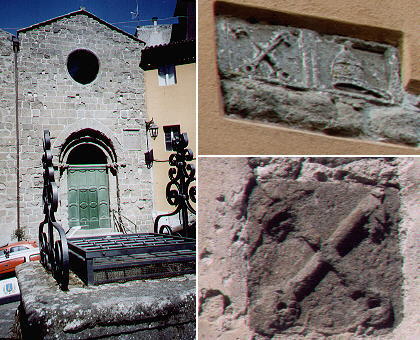 | ||
Montefiascone retains some of the very first examples of use of the papal symbols to mark their sovereignty over a town.
The papal crown and the keys are shown in separate frames and the crown does not have the three layers which characterize it and which were introduced during the pontificate
of Bonifatius VIII (1295-1303). The well shown in the foreground of the image above was dug during the time of Urbanus IV (1261-65); its supply of water allowed the town to resist a long siege.
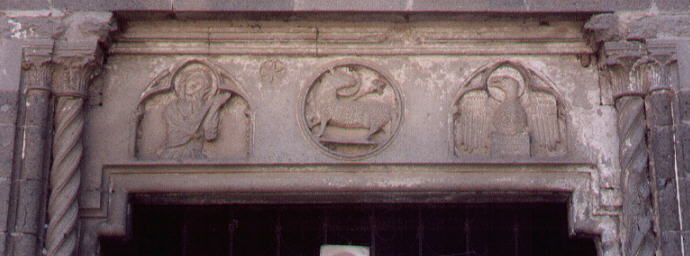 | ||
Montefiascone had several medieval churches and monasteries: the relief shown above is the only memory left of an old monastery.
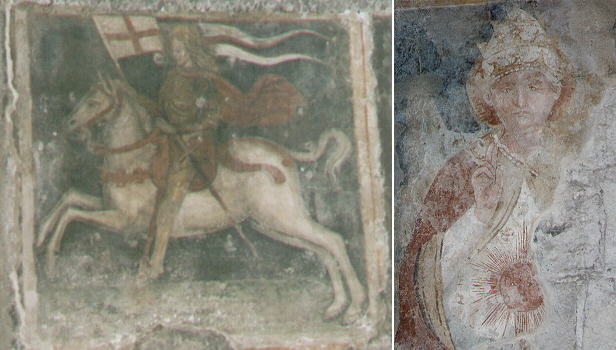 | ||
The church of S. Flaviano, outside the walls of Montefiascone, attracts German visitors because of the tomb of the Canon Johannes Fugger of Augsburg with the inscription:
(hic) Jo(hannes) De Fuk. D(ominus) meus mortuus est.
It is recorded of this ecclesiastic, that, when travelling, he directed his valet to precede him and to inscribe the word "Est" (there is) on the doors of the hostelries where the best wine was to be had. On the door of the inn at Montefiascone the "Est" was written three times, and the good canon relished the wine here so highly that he never got any farther. The best wine of Montefiascone is still known as Est, Est, Est.
Besides the anecdote, S. Flaviano is a very interesting church (actually two churches, the inferior one being the older) with elaborate capitals and many XIVth and XVth century frescoes.
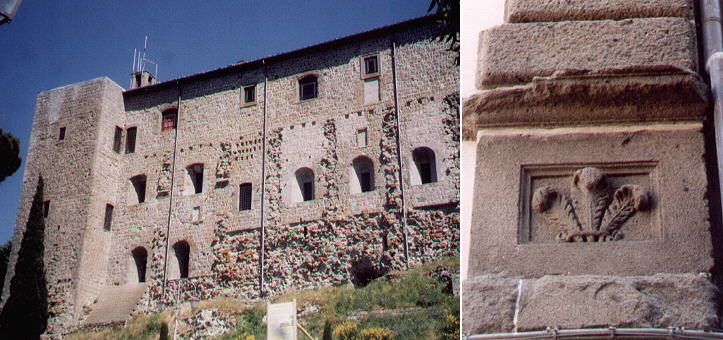 | ||
The ruined fortress at the top of the hill shows evidence of its history. Its lower layer goes back to very old times; then it became a medieval fortress and finally some large windows and a loggia were opened in the thick walls so that it could be used as a residence for the cardinals ruling Montefiascone.
The locals call Palazzo dei Pennoni (large feathers) a Renaissance building in a narrow street below the fortress. The three ostrich feathers do not mean the palace belongs to the Prince of Wales, but possibly that it belonged to Cardinal Giovanni de' Medici (Pope Leo X) who lived in the area: the coat of arms of the Medici family shows six pills, but they had other heraldic symbols and the three feathers was one of them (it can be seen in Palazzo Medici Lante in Rome).
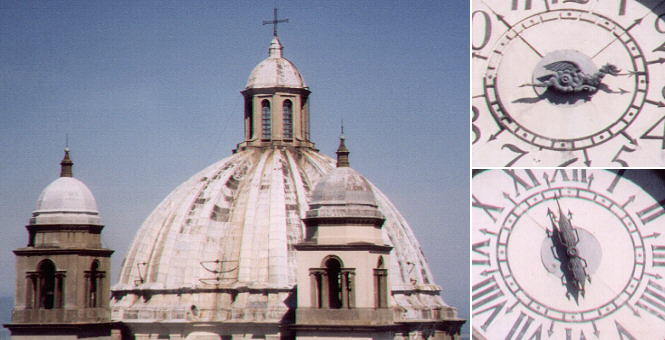 | ||
The inhabitants of many Italian towns drained their resources to build the largest possible Duomo, as Italians usually call their cathedrals, irrespective of the actual need of having such a huge building for religious needs. We still say in Italian that a certain task takes longer than the Opera del Duomo or (in Rome) Opera di S. Pietro because the completion of these buildings took centuries and in most cases it is still to be achieved. The Duomo of Montefiascone (S. Margherita) was initiated in 1519 and completed in 1843. The foundations were laid out by a Renaissance architect (Michele Sanmicheli), its gigantic dome was designed by Carlo Fontana towards the end of the XVIIth century (it was left unfinished for more than a century) and the fašade and the bell towers were added in the XIXth century following Neoclassic patterns.
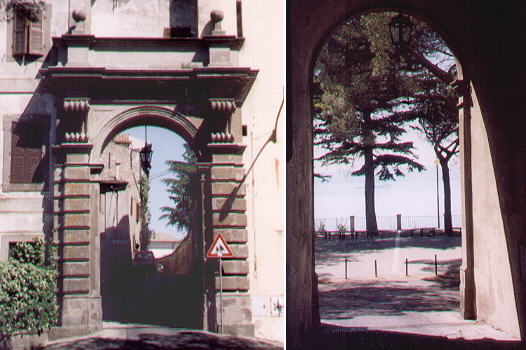 | ||
Montefiascone has an imposing XVIIIth century gate which is shown in a page covering The Gates of the Popes. The gate towards the lake is much simpler: it leads to a large terrace with a fine view.
This section dedicated to Via Francigena ends here but you can continue your journey towards Rome by visiting Viterbo, Capranica, Sutri and Monterosi; you will cross the Tiber at Ponte Milvio and make your entrance into Rome through Porta del Popolo.
A Pilgrims' Way - Via Francigena - other pages:
Introduction - Acquapendente
Bolsena
some other walks:
Walks with Ferdinand Gregorovius in the Roman countryside
In and about Viterbo
From Civitavecchia to Civita Castellana
Around Monte Cimino
In Maremma
Anticoli Corrado where the painters found their models
A walk to Porta Furba
Via Appia Antica from Cecilia Metella to Torre in Selci
Via Appia Antica from Torre in Selci to Frattocchie
A Walk to Ponte di Nona
Branching off Via Cassia: S. Maria di Galeria, Isola Farnese and Formello
A Walk to Malborghetto
See my Home Page on Baroque Rome or my Home Page on Rome in the footsteps of an XVIIIth century traveller
All images © 1999 - 2003 by Roberto Piperno. Write to romapip@quipo.it
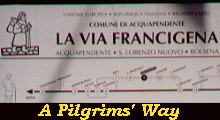 Via Francigena - Montefiascone
Via Francigena - Montefiascone